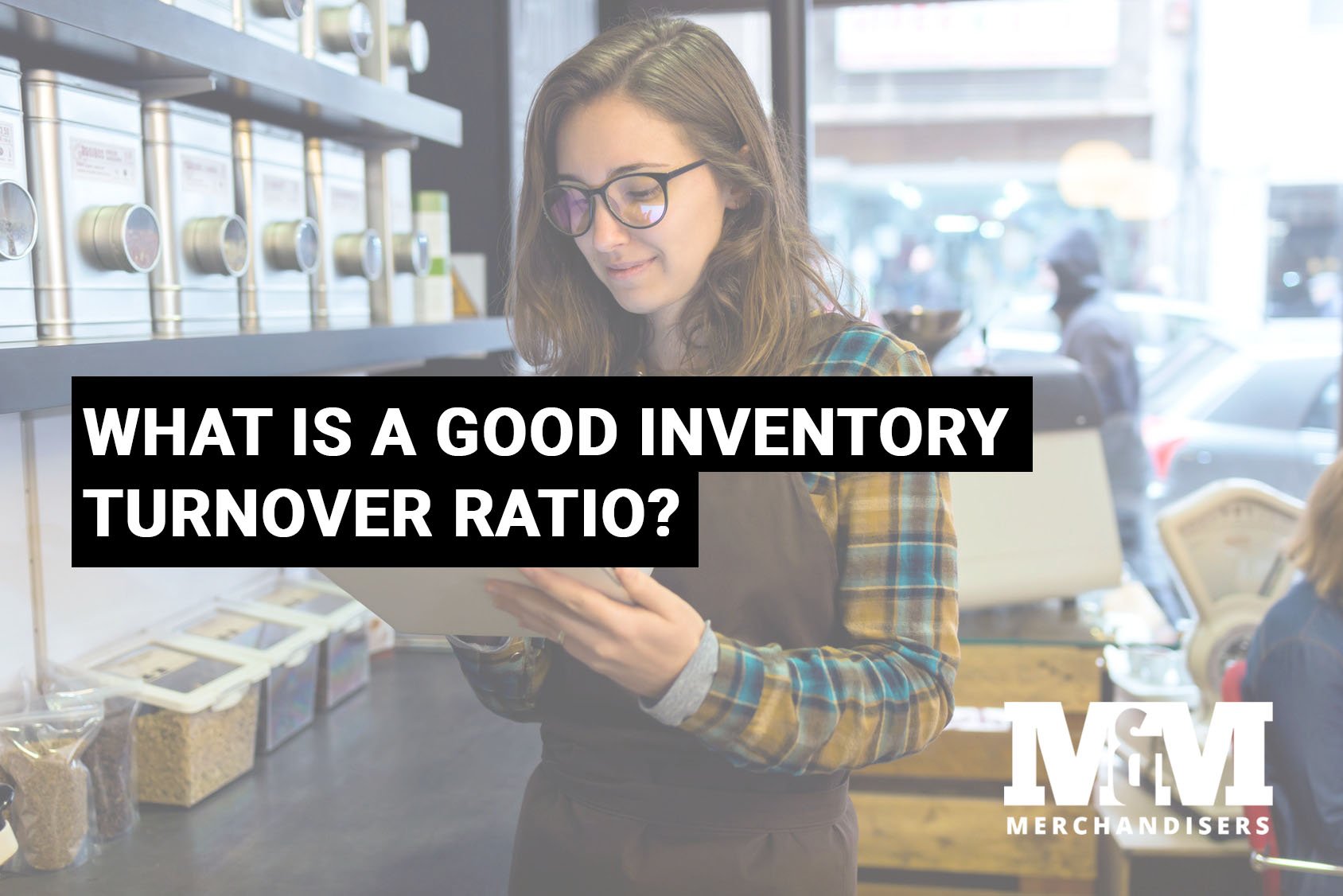What Is a Good Inventory Turnover Ratio?

Looking for a wholesale provider to keep your store stocked?
M&M Merchandisers can be your partner.
What Is a Good Inventory Turnover Ratio?
Understanding your inventory turnover ratio is key for any retailer. If your inventory is selling very well, you need to know about it so that you can ensure you can meet demand. Failure to keep an item in-stock can result in missed sales opportunities. However, if a certain item is performing poorly, it may be in your best interests to cut your losses and consider other merchandise consumers would be interested in.
A good inventory turnover ratio will show that your company has made some profit over a period of time, usually 12 months. It will quantify how many times you have been able to sell and replace your inventory over the year. Ideally, you will want to sell your inventory several times over within a given period. This is crucial when you want to grow your company and need to attract investors, who will want to make sure they are making a solid investment.
Your turnover ratio will depend on various factors, like:
- Retail category: Certain industries will just typically have a higher turnover ratio as products sell very quickly. For example, a fashion or home goods retailer can usually expect to have higher turns than a retailer selling custom furniture because the latter appeals to just a certain type of clientele.
- Geographic location: Stores in popular cities are likely to experience higher turnover than shops in rural areas.
- Merchandise selections: Do you have a good mixture of different products? You might see better rates than a shop that sells just one type of product.
- Marketing efforts: You can’t expect to attract more customers without putting in some time marketing your company. The more customers you can get into the store, the more sales you’ll likely make.
- Store recognition: Is your store part of a chain, or is it a one-and-only location? Chains tend to attract more customers because they have a wide reputation. However, if your store is on its own, increasing your marketing efforts can help improve its recognition.
- Customer demographics: The demographics you appeal to can definitely shape your inventory turnover ratio. For example, women are the world’s top consumer, making up to 80% of all consumer sales. If your store mostly appeals to the male gender, then you could be missing an important sales opportunity.
Understanding Inventory Turnover Ratio by Industry Benchmarks
What makes up a good turnover ratio really all depends on your specific industry. There are certain benchmarks that you can reach for by comparing your ratio with the inventory turnover of other companies within your industry. If your business is just starting out, be sure to look at how similar businesses performed in prior years as well for a more realistic standard.
Another benchmark that you should analyze is your net profit margin, which you can determine by dividing your net income by your net sales. Let’s say you come up with an average net margin of 8 percent. That means your average profit is only $8 for every $100 in revenue. You can get a good idea of how your company is performing by comparing these numbers to other organizations in your industry.
Related: How Can I Improve My Merchandising Skills?
How to Calculate Inventory Turnover
You can calculate inventory turnover by dividing retail sales within a certain period by the average inventory that you had within that same time frame. For example, a retailer that has $2,500 in average inventory over 12 months with sales of $25,000 has been successful in selling their inventory 10 times over that year.
It’s important to factor in average inventory instead of ending inventory because stock generally varies throughout the year. To determine your average inventory, you can usually add the beginning inventory and the ending inventory and then divide that number by two. Once you know where you stand, you will be able to make more informed decisions regarding marketing, pricing, and purchasing new merchandise for your store.
Is a High Inventory Turnover Ratio Good or Bad?
As a business owner, you want to aim for a high inventory turnover ratio, which typically suggests you have a strong sales number. When you have a low inventory turnover ratio, it usually means that your merchandise isn’t performing as well. It may be priced too high or just not that interesting to buyers—either way, you have excess inventory and not enough sales coming in, so you should act accordingly. On the flip side, if you have an extremely high ratio, it could mean that you aren’t meeting demand and may need to add to your stock.
How to Analyze Inventory Turnover
Ultimately, your inventory turnover ratio is a measure of how efficiently you can manage your merchandise. For example, let’s say you reported $500,000 in sales last year, but your average inventory was $1,000,000. This means your inventory turnover is 0.50, indicating that you only sold about half of your inventory. At that rate, it would take you two years to sell what you have already spent on your merchandise, which may mean you have a surplus of inventory that doesn’t sell.
Now you know more about inventory turnover and how you can help your business better control the numbers. With the right plan, you can improve your turnover rates and manage your inventory more effectively.
Posted by Lois Haycock
Lois Haycock is a 20+ year retail and eCommerce veteran specializing in project management and business analysis of customer-facing systems and software. Lois is SVP of Digital Transformation at M&M Merchandisers. She also operates several eCommerce stores as well as an executive coaching business. Lois can be reached at lois.haycock@mmwholesale.com



